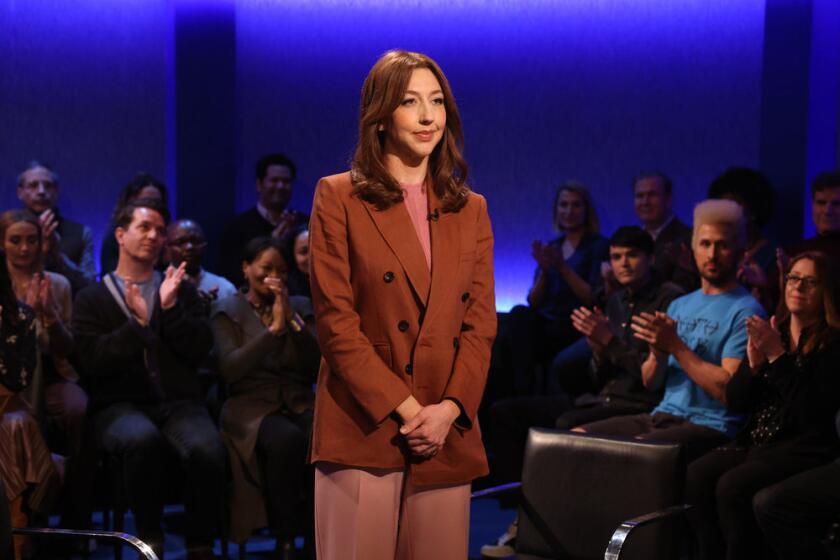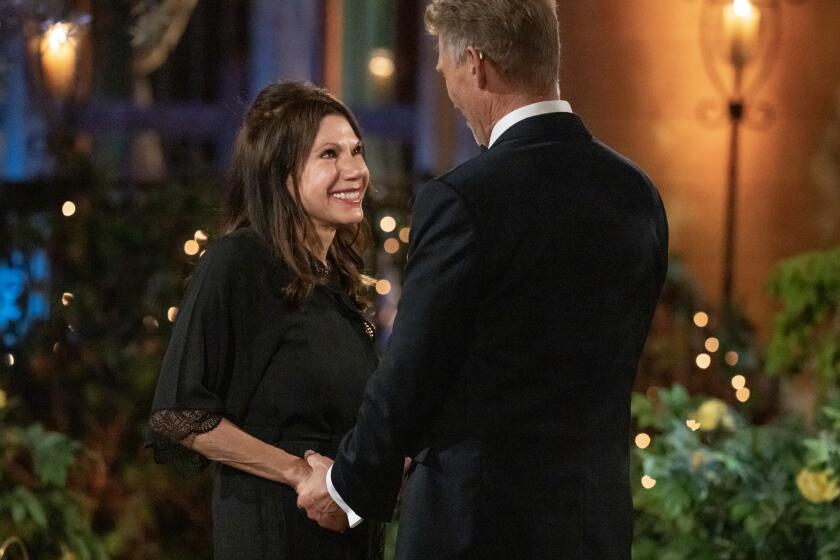A Second Look: ‘The Red Riding Trilogy’
The crime drama has long been a specialty of British television, where the likes of “Cracker” and “Prime Suspect” enjoyed healthy runs. On paper, “The Red Riding Trilogy,” adapted from a series of novels by David Peace that draw on real-life killings in the northern England county of Yorkshire, would seem to continue that storied tradition.
But the curious thing about this decade-spanning miniseries — which consists of three self-contained but interlinked features — is the extent to which it bypasses the usual satisfactions of both crime fiction and serial drama. Aired on Britain’s Channel 4 last year and released in theaters stateside this year, it arrives on DVD in a single volume this week.
From one film to another — “1974,” “1980,” “1983” — stories overlap, contexts shift and characters recur. But while the plots are busy and intricate, the emphasis is not really on narrative propulsion or coherence, let alone closure. The “Red Riding” movies are less about the investigations into the murders (all of girls and young women) than about the fallen world in which they occurred. The north of England is very much a physical location in these films: a wasteland of postindustrial decline, an expanse of gray skies, foggy moors and grim concrete structures.
But this being, as the title suggests, a twisted gothic fairytale, it is also a kind of existential landscape, an almost mythic place where “the rot,” as one of the thwarted good guys calls it, has penetrated to a cellular level.
There is a unity of mood across the films, which were made by three directors — Julian Jarrold (“Brideshead Revisited”), James Marsh (“Man on Wire”) and Anand Tucker (“Shopgirl”) — working with different crews and shooting on different formats: grungy 16-millimeter for “1974,” glossy 35-millimeter for “1980” and hyperreal high-definition video for “1983.” All the screenplays are by Tony Grisoni; Peace wrote four novels, published between 1999 and 2002, and four films were planned, but the second in the series, “1977,” was dropped for budgetary reasons.
Each movie is about the cruel disillusionment of an idealistic outsider venturing into a deadly boys’ club. “To the North,” the local toast goes, “where we do what we want,” “we” being the many thuggish men who dominate the films’ combined 300-minute-plus running time. These tough-guy misogynists include not just the serial killers at large but also the soul-sick region’s nominal law enforcers and pillars of society (businessmen, priests, newspaper editors).
Andrew Garfield’s gung-ho cub reporter in “1974,” returning home from a stint in the south, attempts to connect the latest child killing to earlier cases and runs into a wall of resistance. His investigation is further complicated by his involvement with a grieving mother-cum-femme fatale (Rebecca Hall), who’s tangled in what appears to be a large-scale coverup.
Widely and justifiably deemed the best stand-alone film, “1980” shifts the focus to the real-life Yorkshire Ripper, who was responsible for the murders of 13 women. But it dwells less on the case than on an internal affairs investigation that has been entrusted to an upstanding Manchester inspector (an excellent Paddy Considine). Battling his own demons — he’s trapped in a stale marriage and guilt-stricken over an affair with a colleague — he walks into a hornet’s nest of corruption and brutality; many of the cops, it turns out, are as prone to pathological violence as the killer they are pursuing.
Shouldering the burden of resolution, “1983” concerns a lawyer (Mark Addy) who’s trying to free the man framed for the child killings in “1974,” but also draws out the key roles of peripheral figures from the previous films, including a conflicted cop (David Morrissey), a clergyman (Peter Mullan) and a hustler (Robert Sheehan). The least elegant of the three, not least for being too reliant on flashbacks, “1983” is also marred by an overwrought conclusion that strains for an off-key note of redemption.
Like the more interesting serial-killer films of recent years — David Fincher’s “Zodiac,” Bong Joon-ho’s “Memories of Murder” — “The Red Riding Trilogy” is not all that concerned with solutions. Mysteries are answered but loose ends stubbornly remain. Individuals emerge from the gloom only to sink back into it. The murkiness of the story even works in its favor at times. There are heroes, all fallible, and there are plenty of big, bad wolves. But more than anything, the movies are about atmosphere, a background of hopelessness and malaise that inexorably swallows up the foreground.
calendar@latimes.com
The complete guide to home viewing
Get Screen Gab for everything about the TV shows and streaming movies everyone’s talking about.
You may occasionally receive promotional content from the Los Angeles Times.



